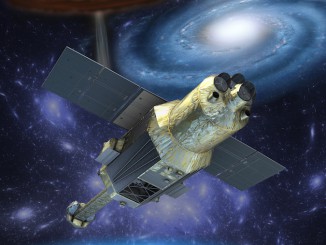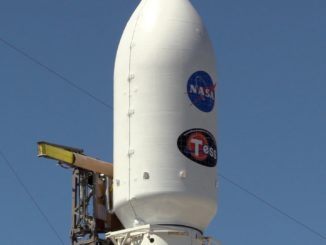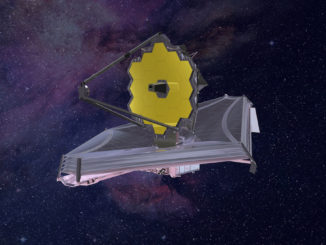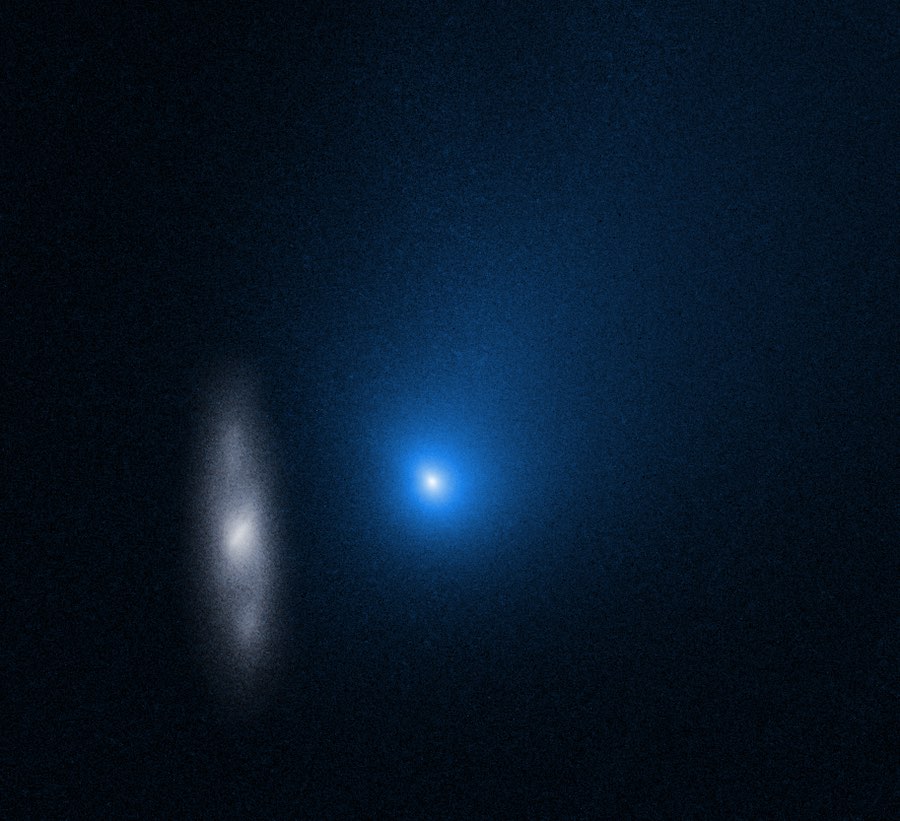
A comet originating from outside our solar system has been imaged by the Hubble Space Telescope as it made its closest approach to the sun earlier this month.
Hubble’s newest imagery of Comet 2I/Borisov shows the interstellar interloper as it sojourned through our solar system, reaching about twice the distance from the sun as Earth’s orbit Dec. 8.
The comet is making a one-time visit to our solar system. Its immense speed of 100,000 mph (44.7 kilometers per second) is too great for the object to be captured by the sun’s gravity, meaning the comet will leave our solar system as quickly as it arrived.
Hubble has been tracking the interstellar comet for several months. Comet 2I/Borisov is the second interstellar object to be spotted visiting our solar system, and the first one to be classified as a comet.
Gennady Borisov, a Crimean amateur astronomer, discovered the comet Aug. 30. After confirming the comet’s interstellar origin, professional astronomers used ground-based observatories for detailed observations.
A Hubble image captured Oct. 12 showed Comet 2I/Borisov at a distance of 260 million miles (420 million kilometers) from Earth.
Another Hubble observation Nov. 19 showed the comet as it traveled 203 million miles (326 million kilometers) from Earth, but this time the orbiting telescope caught a glimpse of the comet passing in front of a distant background spiral galaxy, providing astronomers and space fans a unique cosmic perspective.
Finally, Hubble looked toward Comet 2I/Borisov on Dec. 9, a day after the comet reached perihelion, the point of its hyperbolic trajectory closest to the sun. The comet is set to make its closet approach to Earth in late December at a distance of around 180 million miles (289 million kilometers), then start its departure from the solar system back into interstellar space, the region between the stars.
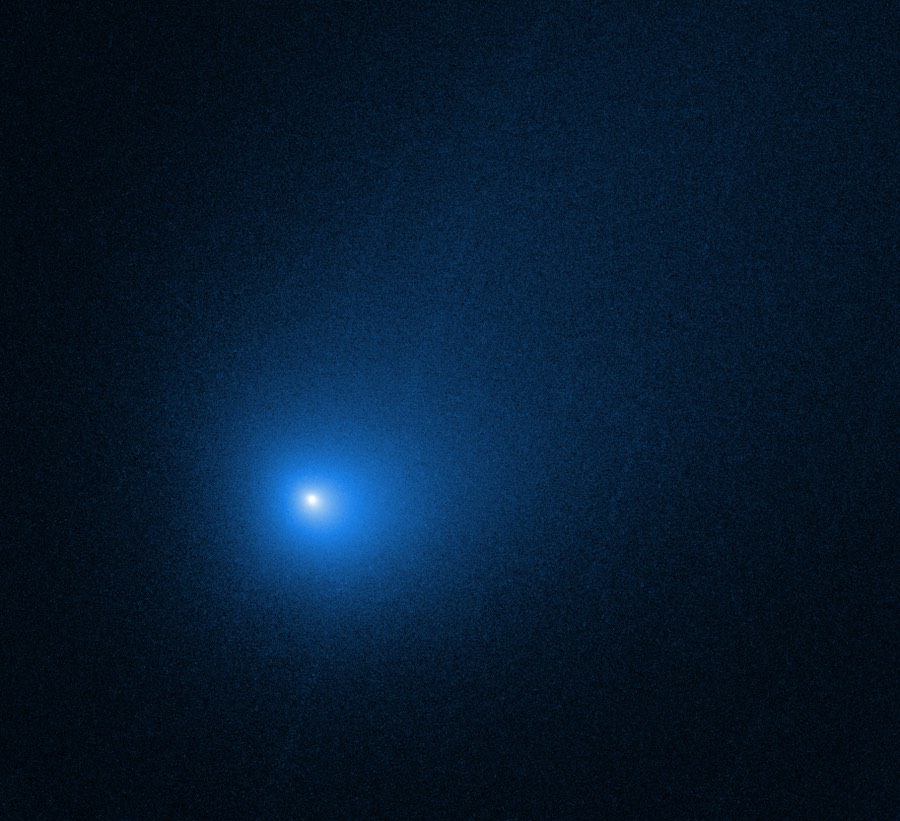
Even Hubble’s powerful telescope was unable to resolve the comet’s nucleus, or core, which scientists say is made up of a mix of ice and dust. But Hubble’s observations allowed astronomers to estimate the comet’s nucleus is likely no larger than 3,300 feet, or 1 kilometer, in diameter.
“Hubble gives us the best upper limit of the size of Comet Borisov’s nucleus, which is the really important part of the comet,” said David Jewitt, a UCLA professor of planetary science and astronomy, whose team has captured the best and sharpest look at this first confirmed interstellar comet. “Surprisingly, our Hubble images show that its nucleus is more than 15 times smaller than earlier investigations suggested it might be. Our Hubble images show that the radius is smaller than half-a-kilometer.
“Knowing the size is potentially useful for beginning to estimate how common such objects may be in the solar system and our galaxy,” Jewitt said in a statement. “Borisov is the first known interstellar comet, and we would like to learn how many others there are.”
Telescopic observations show Comet Borisov’s composition is similar to the chemical make-up of comets that form in our own solar system.
An object named ʻOumuamua, or 1I/2017 U1, was discovered in October 2017, weeks after it make its closest pass to the sun. Scientists confirmed ʻOumuamua came from interstellar space — the first object of its kind ever detected — and it had an unusual elongated shape, like a cigar or a frisbee.
Although astronomers have detected only two interstellar objects traveling through the solar system, scientists believe such interlopers are regular visitors. But they are often dim and move extremely fast, making their detection difficult.
Email the author.
Follow Stephen Clark on Twitter: @StephenClark1.

